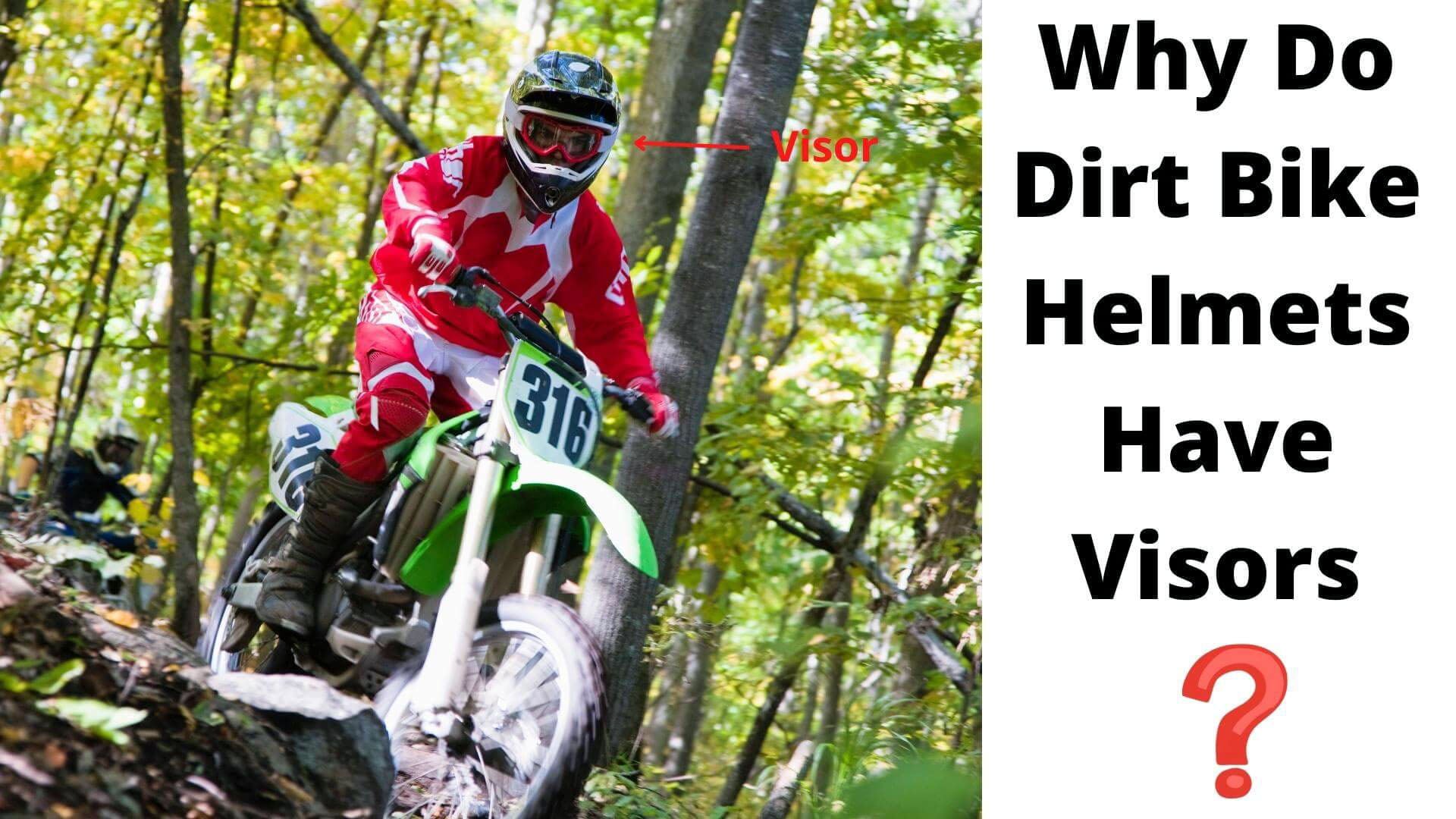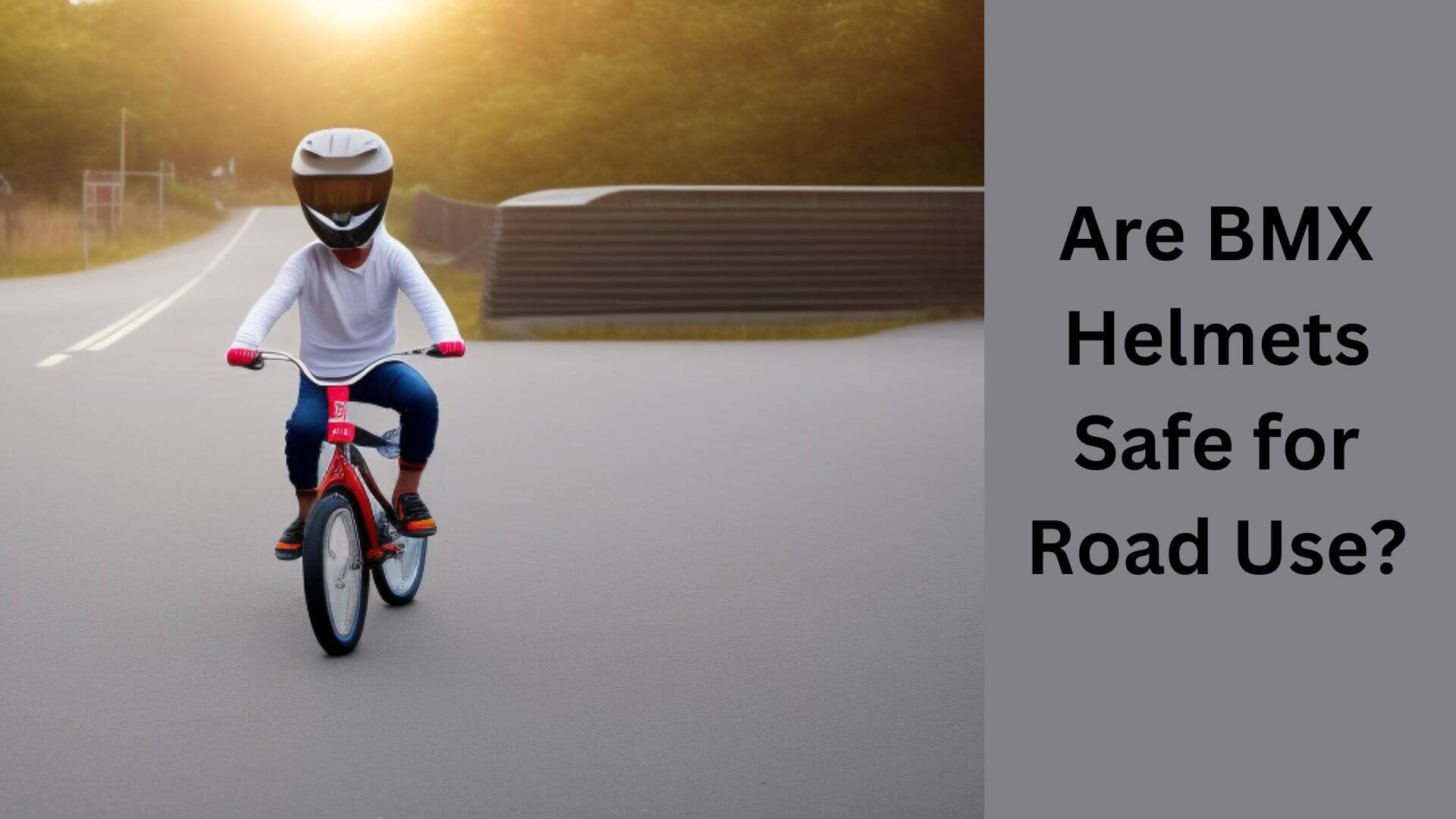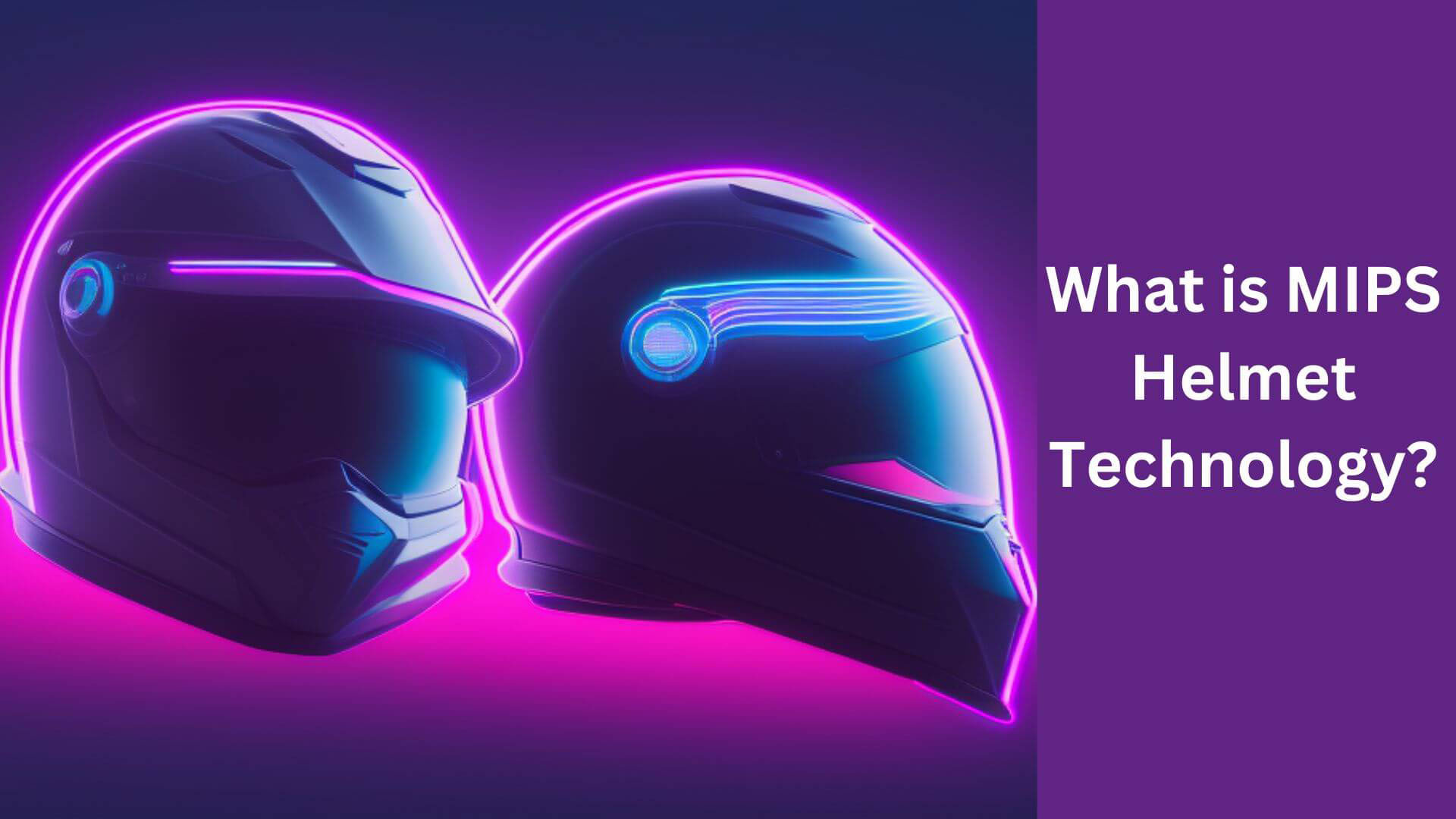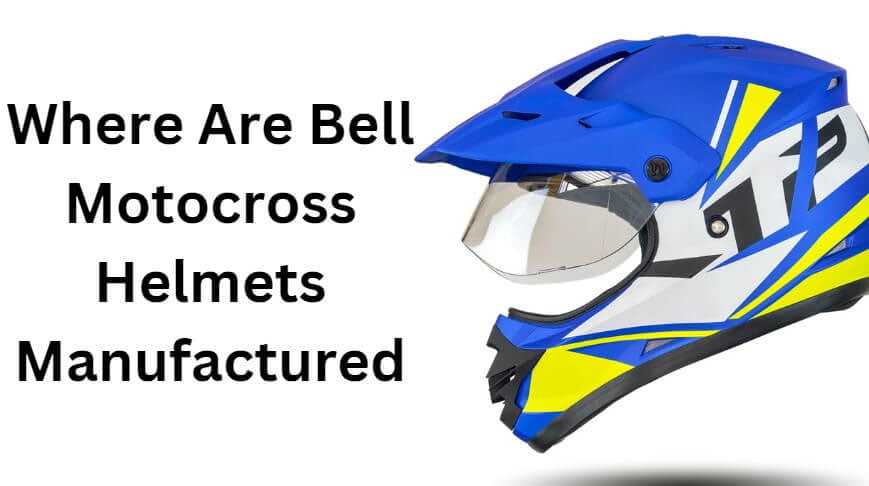Why do Dirt Bike Helmets Have Visors? Advantages Explained!

Dirt bike helmets with visors are designed to protect your face from debris that may be thrown up by your dirt bike. A dirt bike helmet without a visor would not provide adequate protection for your face.
This post discusses the benefits of wearing a dirt bike helmet with a visor, including why they are so important for your safety.
What is a Dirt Bike Helmet?
Dirt bike helmets are helmets that are designed specifically for dirt biking. They are made out of high-quality materials and have features that make them safer for dirt biking. One important feature is ear protection.
Dirt bike riders often go head-on with the ground, and their helmets help protect them from injuries caused by falls. In addition, the helmet has a chin strap that keeps it in place during a crash.
How are Dirt Bike Helmets Made?
Dirt bike helmets are made from a variety of materials, but the most common is plastic.
First, a mold is created on the rider’s head. This mold is used to make a helmet prototype that will be used to test the fit and comfort of the helmet.
The final helmet will have slight variations in size to ensure a perfect fit for each rider. After the prototype is made, it is tested on a volunteer’s head to ensure that it meets safety standards.
Next, the plastic helmet is injection-molded using a high-pressure machine. This process creates an extremely durable helmet that can withstand crashes and impacts.
A Simple Explanation of Visor Technology

A visor is a type of headwear that helps protect the wearer’s eyes from harmful UV radiation. Visors can be found on a variety of sports equipment, including baseball caps, motorcycle helmets, and ski masks.
They work by blocking out most of the incoming sunlight while allowing light to pass through the gaps around the sides and top.
The first visors were developed in the late 1800s as protection for workers in tanneries and other industries that exposed their workers to high levels of UV radiation. Today, visors are widely used in a variety of sporting environments to protect athletes from exposure to UV radiation.
There are two types of visors: open-face and full-face. Open-face visors have a mesh design that allows air to flow freely through them, which keeps athletes cooler during hot weather situations.
Visor Safety Benefits

In recent years, helmet visors have become increasingly popular among motorcyclists. They provide protection for both eyes from wind and debris, but also help reduce glare and enhance visibility.
While helmets are mandatory equipment for motorcycle riders, some states require only that riders wear helmets when riding on public roads. Others require all riders to wear helmets regardless of road conditions. Still, others allow riders to choose between wearing helmets and carrying passengers.
Regardless of state law requirements, here are some benefits of wearing a helmet:
1. Protecting Both Eyes
Motorcycle accidents are common due to high speeds and low visibility, so having eye protection is essential. When a rider wears a helmet, the front surface of the helmet protects his/her face and forehead from flying objects like gravel and branches.
The back surface of the helmet shields the eyes from debris and wind.
2. Improving Vision
Wearing a helmet improves vision by blocking out light reflections and reducing peripheral blurriness. Even though the sun reflects off the ground, windshield wipers, and other vehicles, wearing a helmet reduces these distractions.
3. Reducing Glare
Glares occur when sunlight hits the side of a vehicle, causing the driver to squint. Wearing a helmet reduces glare by keeping the sides of the head clear.
4. Enhancing Visibility
Riding in poor weather conditions makes it difficult to see clearly. Motorcycles equipped with headlights are required to turn them on during daylight hours, but they may still be too dim to illuminate the roadway ahead. Having a helmet with reflective tape or paint increases visibility.
5. Preventing Injury
Studies have shown that wearing a helmet significantly decreases the risk of injury in crashes. For instance, a study conducted in Australia found that wearing a helmet reduced the likelihood of brain injuries by 60%.
Another study showed that wearing a helmet decreased the severity of traumatic brain injuries by 50%.
6. Providing Comfort
A helmet provides comfort by covering the ears and neck area. Riding in hot climates can make it uncomfortable to ride without a helmet.
Read More: How to Buckle a Dirt Bike Helmet?
Visor Safety Risks
When you’re riding your motorcycle, you need to be wearing a helmet. The law in most states requires it. But there are some risks that come with wearing a helmet that you may not realize. One of the biggest safety risks is when the visor falls off your helmet.
If the visor falls off your helmet, it can hit you in the face or head. In fact, this is one of the most common causes of motorcycle accidents. And it’s not just riders who get injured by visors falling off helmets – pedestrians and other drivers also suffer from these accidents.
So what can you do to make sure that doesn’t happen to you? First, always use a properly fitting helmet. Helmets should fit snugly and should not wobble or move around while you’re riding.
Read More: How to Tint a Motorcycle Helmet Visor Easily And Safely
Why Dirt Bike Helmets Have Visors
Helmets are required equipment for dirt bike riders. They protect the head and face of the rider from flying debris, but they also provide protection from sunburn and heat stroke.
Visors are another type of helmet accessory that can benefit dirt bike riders. Here are some reasons why visors are useful for dirt bike helmets:
1. Protection from Sunburn
Sunburn is caused when ultraviolet rays from the sun strike unprotected skin. Dirt bikes are exposed to high levels of UV radiation during extended riding sessions. Visors block out much of that harmful light.
2. Protection from Heat Stroke
Heatstroke occurs when your body temperature rises above 104 degrees Fahrenheit. When temperatures rise too quickly, your brain becomes damaged and you may die. Visors prevent dirt bike riders from overheating and suffering heatstroke.
3. Facial Hair Protection
Dirt bike helmets usually come with chin straps that hold facial hair in place. However, these straps aren’t very effective. Visors are a convenient alternative to keeping facial hair under control.
4. Eye Protection
Visors are used to protect eyes from dust, bugs, and debris. Dirt bike riders often wear goggles to protect their eyes from wind and rain. But goggles don’t cover the entire eye area. Visors extend over the entire eye socket and protect the eyeball from flying objects.
5. Wind Resistance
Wind resistance is a big concern for dirt bike riders. Visors reduce wind drag so that riders can maintain speed and control.
6. Coolness Factor
Many dirt bike riders enjoy wearing hats and sunglasses. While these accessories are helpful, they’re not comfortable. Visors are lightweight and cool, making them perfect for hot days.
7. Comfort
Visors are made of plastic material and are therefore lighter than traditional helmets. They are easier to put on and remove, and they fit comfortably around the ears.
Read More: How to Remove Scratches From Motorcycle Helmet Visor?
What are the different types of visors in dirt bike helmets?
Dirt bikes require a helmet that fits properly. Dirt bike helmets come in all shapes and sizes, so it’s important to find the right fit for you.
Here’s a look at some of the different types of visor options available:
1. Full Face Visor
Full-face visors cover the entire front of your head and protect you from wind and debris. They also provide additional protection against sunburn and heat.
2. Half Face Visor
Half-face visors only cover half of your forehead. They leave your eyes exposed and may cause eyestrain. However, they still offer excellent protection against wind and debris.
3. No Visor
No visors allow air to flow freely around your head. They are usually used for competition events like motocross races.
4. Windshield Style Visor
Windshield-style visors feature a raised edge along the bottom of the visor. These visors are typically used for riding in cold weather conditions.
5. Side Shield Visor
Side shield visors attach to the side of your helmet instead of the top. They are similar to windshield-style visors but are easier to clean.
6. Rear View Mirror Visor
Rearview mirror visors are attached to the back of your helmet and allow you to see behind you. They are useful when riding trails or navigating unfamiliar areas.
7. Flat Top Visor
Flat top visors are made out of plastic and attach directly to the top of your helmet. They are popular among riders looking for a sleek appearance.
How often should dirt bike helmet visor replacement occur?
Dirt bike helmets have a visor that helps protect the rider from debris and rocks flung up from the ground. Visor replacement is recommended every three to four years, depending on use. If the helmet has been damaged in an accident, it should be replaced as soon as possible.
Frequently Asked Question
How do I put on a dirt bike helmet?
Put the visor on your head, make sure that the strap is tight enough to hold it in place, and adjust the strap so that it’s comfortable.
What kind of visor do I need?
There are two kinds of visors. One is a full-face visor and the other is a half-face visor.
What is the difference between a full-face visor and a half-face visor?
A full-face visor has a higher protective factor than a half-face visor. What is the best helmet for dirt bike racing? The best helmet for dirt bike racing is a full-face visor.
How do I take off a dirt bike helmet?
Take the visor off your head and make sure that the strap is tight enough to hold it in place.
Conclusion
In conclusion, the visor on a dirt bike helmet protects the rider from flying debris and other potential injuries. By having a visor, riders can enjoy the thrill of riding dirt bikes without worrying about safety.
Now that you know why dirt bike helmets have visors, be sure to always wear one when riding!

Hey, I’m Hrithik Hossain. I am the head of helmethacks.com, which specializes in safety helmets. I am looking to connect with anyone interested in purchasing a helmet or who has any questions about different types of helmets. I have over 8 years of experience as a helmet expert, and I can’t wait to help you find the perfect helmet for you. I can help you with any questions regarding helmets, from the best brands to fitting, style, and more! I really enjoy keeping people safe by ensuring they have the best protection possible.








For off-road purposes, a dirt bike helmet will be an ideal choice to against flying debris, dirt, and weather extremities. However, if you use it on casual road riding, you may opt not to use a visor.
Thank you for sharing your thoughts on dirt bike helmets and their suitability for off-road purposes. I agree that a dirt bike helmet is designed to provide optimal protection against flying debris, dirt, and weather extremities, making it an ideal choice for off-road riding.
Regarding casual road riding, you mentioned that one might opt not to use a visor. While it’s true that some riders prefer not to use a visor during road riding, it’s important to consider safety as the top priority. A visor can provide additional protection against wind, dust, insects, and other potential hazards that you may encounter on the road. It also helps to improve visibility by reducing glare and shielding your eyes from the elements.
Ultimately, choosing a visor during casual road riding depends on personal preference and the specific conditions you expect to encounter. It’s always advisable to prioritize safety and make informed choices based on the circumstances and potential risks involved in your riding environment.